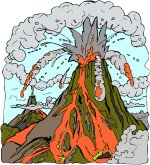
Worksheets and No Prep Teaching Resources
Reading Comprehension Worksheets
Earth Science

Earth Science
 Worksheets and No Prep Teaching Resources Reading Comprehension Worksheets Earth Science |
 Earth Science |
| edHelper's suggested reading level: | grades 9 to 10 | |
| Flesch-Kincaid grade level: | 9.35 |
| Print Fire and Dust (font options, pick words for additional puzzles, and more) |
| Quickly print reading comprehension |
| Print a proofreading activity |
|
Fire and Dust
By Trista L. Pollard |

|
 1
1 | A force of thousands, Thrust toward the air Tiny particles, too small to stare Each unique and full of text Of the Earth's anger, fire, and vex |
 |
Create Weekly Reading Books
Prepare for an entire week at once! |
| Leave your feedback on Fire and Dust (use this link if you found an error in the story) |
 |
Earth Science
|
 |
High School Reading Comprehensions and High School Reading Lessons
|